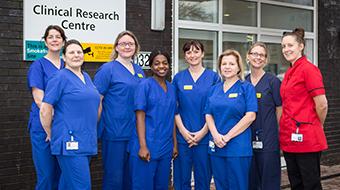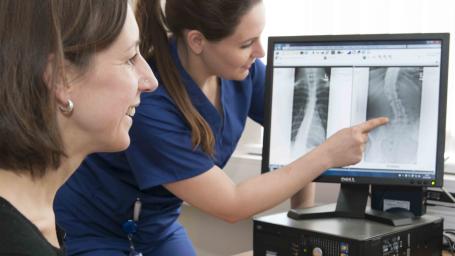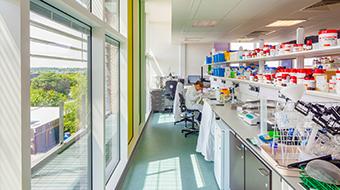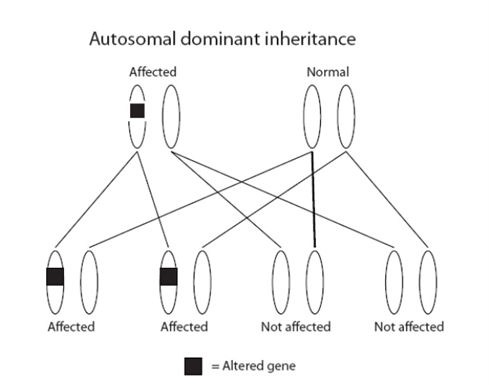What is a molar pregnancy?
Molar pregnancy (also called hydatidiform mole) occurs when a pregnancy does not develop properly. In healthy pregnancies, an embryo (baby) develops when a sperm fertilises an egg and the genetic material (chromosomes) from each combines to produce a baby which has half of its genes from each parent. A molar pregnancy is abnormal from the very moment of conception as a result of an imbalance in the number of chromosomes supplied from the mother and the father.
There are two types of molar pregnancy - complete mole and partial mole.
- Complete moles usually occur when a single sperm fertilises an ‘empty’ egg with has no genetic material inside, and then divides to give the fertilised egg a normal number of chromosomes, all of which have come from the father. Complete moles can also occur when two sperm fertilise an ‘empty’ egg.
- Partial moles occur when two sperm fertilise a normal egg and the developing pregnancy then has three sets of chromosomes or more. In a partial mole, there are usually some early signs of development of a fetus on ultrasound but it is always abnormal and cannot develop into a baby.
Molar pregnancy is more likely to develop in women of Asian origin, teenagers and women over 40 years.
If left untreated, molar pregnancy can continue to grow and change into cancerous cells. Therefore when molar pregnancy is diagnosed, it is important that this is promptly treated and carefully monitored.
It is important for you to know that a molar pregnancy is not caused by anything that you/your partner have or haven’t done.
How common is molar pregnancy?
Molar pregnancies are rare, happening with roughly 1 case for every 600 pregnancies in the UK.
When might a molar pregnancy be suspected?
If you have a molar pregnancy you may have irregular or heavy bleeding from the vagina, or excessive morning sickness (hyperemesis). Your womb (uterus) may feel larger than your midwife or doctor would expect in early pregnancy. Less commonly, you may develop raised blood pressure, symptoms of an overactive thyroid gland or abdominal pain because of large ovarian cysts.
If your doctor suspects that you may have a molar pregnancy, you will be referred to an early pregnancy clinic for an ultrasound scan.
If you have a complete mole, there will be no baby present inside the pregnancy sac and there may be other signs that suggest the presence of a molar pregnancy. Ultrasound may also help in diagnosing partial moles, but it is not as reliable as in cases of complete moles.
A blood test which measures the amount of the pregnancy hormone human chorionic gonadotrophin (hCG) may also raise the suspicion that you have a molar pregnancy. Usually, the levels of this hormone are much higher than would be expected in a healthy pregnancy.
A molar pregnancy may be found after what is suspected to be a miscarriage.
How is it diagnosed?
Most molar pregnancies are diagnosed at the first ultrasound scan then confirmed by a laboratory analysis of the pregnancy tissue. In some cases, the pregnancy tissue may have been sent to a laboratory for analysis following surgery for miscarriage or termination for other reasons. This may confirm that the pregnancy was molar, even if a molar pregnancy was not initially suspected.
How is it treated?
Once a molar pregnancy is confirmed, the first step is to remove the cells from the womb. This is usually done surgically using a suction evacuation procedure. Medication may be used to soften the cervix (neck of the womb) prior to your operation. You will usually need a general anaesthetic for this type of operation. During the operation, the cervix is stretched slightly and a suction device is used to remove all of the abnormally formed tissue from inside your womb.
In some unusual cases, you may be recommended to have a miscarriage induced with medication. The doctors looking after you will discuss this with you in detail if this is the case.
What happens after the treatment?
After the initial treatment, all people with a molar pregnancy should be in a follow-up programme that monitors what is happening to any cells that remain in the womb and picks out those people that need further treatment. In the UK, all people who have a molar pregnancy are enrolled into a national surveillance programme. The closest surveillance centre to Bristol is Charing Cross Hospital in London.
Molar pregnancy cells produce pregnancy hormone called hCG. This is why people with molar pregnancies have a positive pregnancy test despite not having a normal pregnancy.
Measuring the level of hCG after removal of molar pregnancy allows the surveillance team to follow exactly what is happening with any molar pregnancy cells left in the womb. The level of hCG in the blood gives a really accurate picture of what these cells are doing. If the level of hCG is falling then the number of cells are reducing and no treatment is needed. If the level is static or rising then the number of abnormal cells is increasing and additional treatment may be needed.
People on the surveillance programme will be contacted directly by Charing Cross Hospital and typically asked to send in blood and/or urine samples until hCG level has fallen to a reassuring level. It is very unlikely that you will need to seen in person at Charing Cross Hospital in London.
What if I need further treatment?
The majority of people who have a molar pregnancy will not need any further treatment after the initial suction evacuation procedure. However, approximately 15% of people with complete molar pregnancy and around 1% with partial molar pregnancy will require additional treatment.
The two main reasons patients need further treatment is because either the hCG level starts to rise or reaches a plateau or because there is heavy vaginal bleeding.
The two choices of treatment are a further surgical evacuation procedure or chemotherapy treatment. The majority of patients are treated with chemotherapy as this has a much higher success rate.
Fortunately the overall cure rate for women who need treatment after a molar pregnancy is over 99%.
When can I try for pregnancy?
We advise that a further pregnancy is deferred until the end of the follow-up period, as a new pregnancy may mask the evidence of the relapse of the molar pregnancy that can happen in a very small number of people.
The length of follow-up will depend on your individual needs. The follow-up will be for at least 6 months and possibly longer depending on how quickly your hCG level returns to a reassuring level.
Once the treatment is completed, the fertility rate is expected to be normal.
Is contraception safe to use?
Yes, both hormonal and non-hormonal type contraception are safe to use.
Is this going to affect my future pregnancy?
People who have had one molar pregnancy do have an increased risk of developing another in future pregnancy. However this risk is still low; estimated at around 1 in 100.
Even more unusually the surge of hormones in a later pregnancy can cause a relapse of the old molar pregnancy and start any cells still present to grow again and potentially cause problems. Whilst this problem is very rare, we screen for it by testing the urine 6 weeks after delivery and the blood and urine 4 weeks later after this.
We would also offer an early scan in any subsequent pregnancy from when you are approximately 6 weeks pregnant via the Early Pregnancy Clinic.
Links for useful information:
Charing Cross Hospital Trophoblast Disease Service
/www.hmole-chorio.org.uk/index.html
My Molar Pregnancy: mymolarpregnancy.com/
Molar Pregnancy Support and Information: www.molarpregnancy.co.uk/
Miscarriage Association: www.miscarriageassociation.org.uk
Glossary of terms
Gestational trophoblastic disease (GTD): A group of conditions that may occur when a pregnancy does not develop properly. GTD includes complete and partial molar pregnancy.
Molar pregnancy: An abnormal pregnancy which develops as a result of an imbalance in the amount of genetic material when the embryo first develops. Molar pregnancy is best though of as a pre-cancerous illness which can occasionally progress to a cancerous form of GTD known as gestational trophoblastic neoplasia (GTN).
Complete molar pregnancy: A molar pregnancy where there is no fetus present.
Partial molar pregnancy: A molar pregnancy where there are usually some early signs of development of a fetus on ultrasound but it is always abnormal and cannot develop into a baby.
Gestational trophoblastic neoplasia (GTN): A rare form of cancer which develops from a molar pregnancy. GTN includes invasive mole, chriocarcinoma, placental site trophoblastic tumour and epithelioid trophoblastic tumour.
If you or the individual you are caring for need support reading this leaflet please ask a member of staff for advice.
How to contact us:
Cotswold ward, Brunel building
Southmead Hospital
Westbury-on-Trym
Bristol
BS10 5NB
Cotswold ward (24 hours)
0117 414 6785
© North Bristol NHS Trust. This edition published March 2020. Review due March 2022. NBT003056





